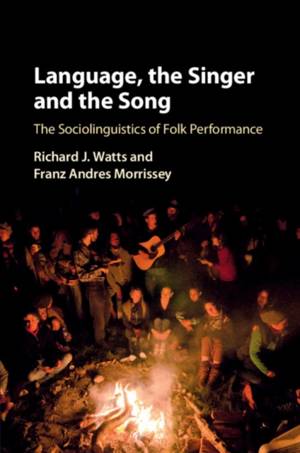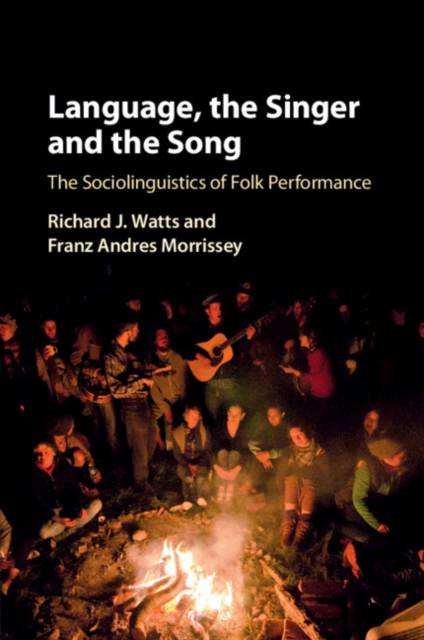
- Afhalen na 1 uur in een winkel met voorraad
- Gratis thuislevering in België vanaf € 30
- Ruim aanbod met 7 miljoen producten
- Afhalen na 1 uur in een winkel met voorraad
- Gratis thuislevering in België vanaf € 30
- Ruim aanbod met 7 miljoen producten
Zoeken
Language, the Singer and the Song
The Sociolinguistics of Folk Performance
Richard J Watts, Franz Andres Morrissey
Paperback | Engels
€ 67,95
+ 135 punten
Omschrijving
The relationship between language and music has much in common - rhythm, structure, sound, metaphor. Exploring the phenomena of song and performance, this book presents a sociolinguistic model for analysing them. Based on ethnomusicologist John Blacking's contention that any song performed communally is a 'folk song' regardless of its generic origins, it argues that folk song to a far greater extent than other song genres displays 'communal' or 'inclusive' types of performance. The defining feature of folk song as a multi-modal instantiation of music and language is its participatory nature, making it ideal for sociolinguistic analysis. In this sense, a folk song is the product of specific types of developing social interaction whose major purpose is the construction of a temporally and locally based community. Through repeated instantiations, this can lead to disparate communities of practice, which, over time, develop sociocultural registers and a communal stance towards aspects of meaningful events in everyday lives that become typical of a discourse community.
Specificaties
Betrokkenen
- Auteur(s):
- Uitgeverij:
Inhoud
- Aantal bladzijden:
- 390
- Taal:
- Engels
Eigenschappen
- Productcode (EAN):
- 9781107533042
- Verschijningsdatum:
- 28/10/2021
- Uitvoering:
- Paperback
- Formaat:
- Trade paperback (VS)
- Afmetingen:
- 152 mm x 229 mm
- Gewicht:
- 521 g

Alleen bij Standaard Boekhandel
+ 135 punten op je klantenkaart van Standaard Boekhandel
Beoordelingen
We publiceren alleen reviews die voldoen aan de voorwaarden voor reviews. Bekijk onze voorwaarden voor reviews.











